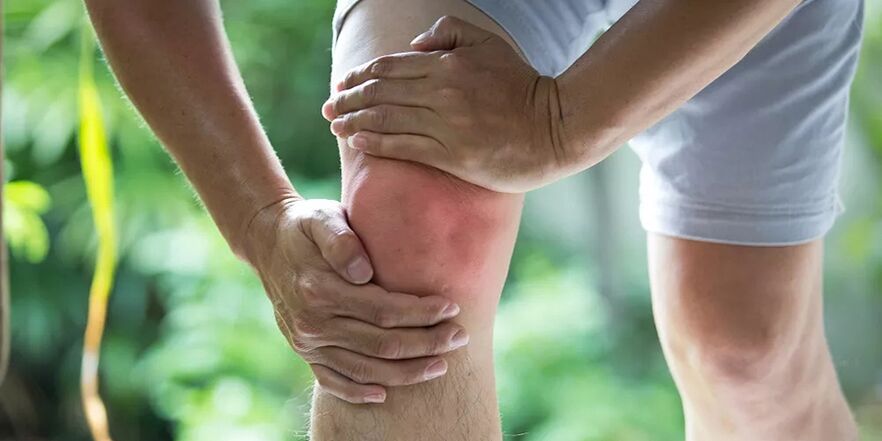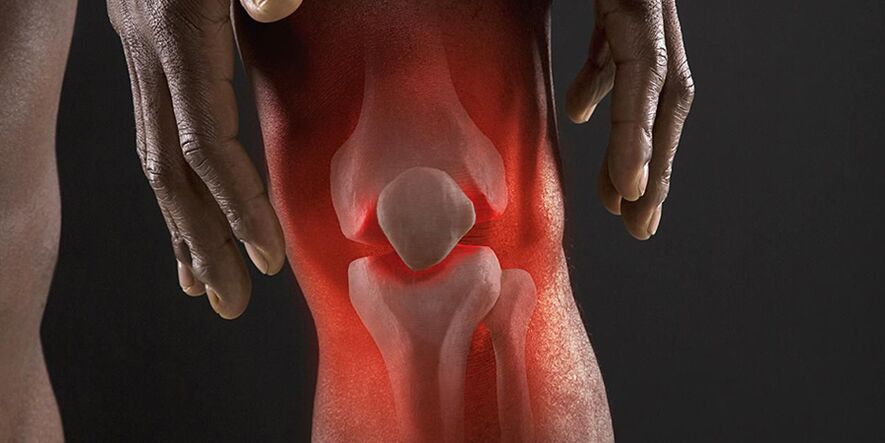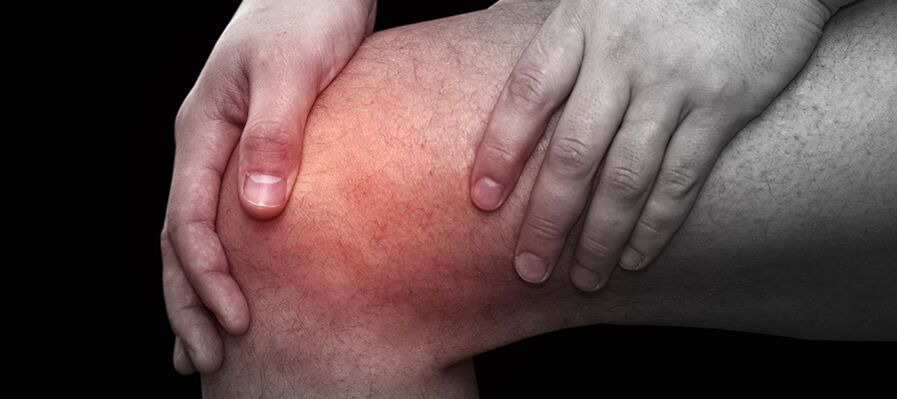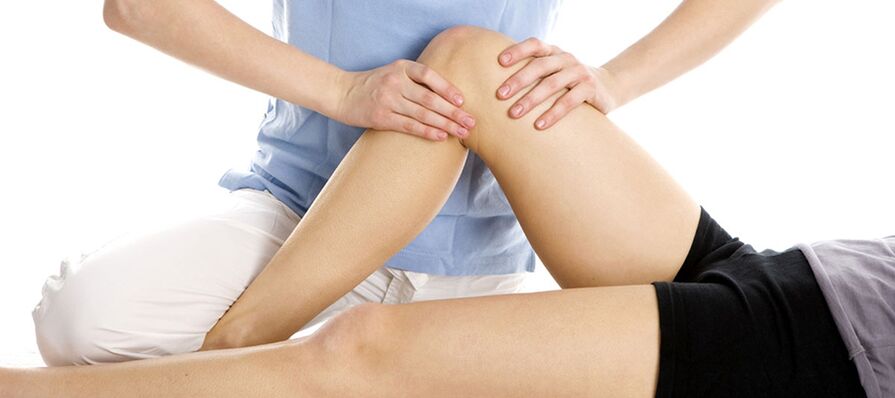
Osteoarthritis of the knee joint (gonarthrosis) is a fairly common disease, second only to coxarthrosis in terms of frequency.
Statistics show that one in five people on the planet suffers from knee osteoarthritis (around 22%).There is a certain connection between this pathology and a person's gender: women suffer from this disease twice as often as men.If we talk about age, the risk group includes patients over 40 years old.
Degenerative changes occur at the molecular level, but over time, when the disease begins to progress, damage to the structure of cartilage tissue is observed.If treatment is not started on time, there is a real risk of bone exposure and destruction of the cartilage itself.

Causes of osteoarthritis of the knee joint
To understand the specifics of the disease, it is extremely important to know for what reasons gonarthrosis develops.It is necessary to understand that the knee joint experiences enormous stress every day due to the weight of the human body.The natural wear and tear of tissues that occurs as people age leads to changes in joint structure.That is why middle-aged and elderly people most often suffer from this disease.
Additionally, knee osteoarthritis can occur for the following reasons:
- Damage and injury.These factors most often influence the development of the disease at an early age.
- Constant charges.We are talking about practicing active sports, despite contraindications and advanced age.
- Excess weight.This factor negatively affects the condition of the menisci.In addition, the pressure on the knee joints increases, which provokes the development of the disease.
- Varicose veins of the lower limbs.
- Bad metabolism.Lack of minerals negatively affects the condition of cartilage.
- Arthritis and other specific and inflammatory joint pathologies.
Symptoms of knee osteoarthritis

The early stages of knee osteoarthritis are characterized by the presence of low-intensity pain.As a rule, a person does not take any treatment measures, ignoring the first signals from the body.This condition can last for several years until it gets worse.
A person experiences intense discomfort when trying to get up after sitting for a long time.Similar sensations occur in the morning when you wake up.
In addition to pain of varying intensity, osteoarthritis of the knee joint is accompanied by the following symptoms:
- Burning in the lower limbs.The condition worsens when climbing stairs.
- Decreased muscle tone.
- Insufficient joint mobility.
- Characteristic crunch.
The specific symptoms depend on the stage the disease is in.It is clear that the more advanced the problem, the more pronounced the manifestations of the pathology.
First degree osteoarthritis
Osteoarthritis of the knee joint of the 1st degree is characterized by a satisfactory condition of the patient, therefore he cannot experience any discomfort.The only thing that can bother the patient is limited mobility after waking up and fatigue in the lower extremities.
Pain is practically absent or mild.Diagnosis of the disease at this stage is possible only with the help of an X-ray examination or MRI.The image shows a narrowing of the space between the joint surfaces, as well as slight irregularities in the cartilage.
Unfortunately, patients extremely rarely seek help at this stage of the disease.Most people have a habit of not paying attention to minor problems, which often leads to worsening of the condition and rapid progression of the disease.
Second degree osteoarthritis
Osteoarthritis of the knee joint of the 2nd degree manifests itself more clearly.The pain occurs immediately after any effort, or directly when lifting heavy loads.This condition disappears after rest, but the discomfort reappears after resuming physical activity.
This stage is also characterized by other symptoms:
- Characteristic crunch.It is quite severe and is very often accompanied by painful sensations.
- Synovitis is a condition characterized by inflammation and swelling of the synovial membranes of the joint.
- Deformations.In the early stages, swelling in the knee area is noticeable, but the situation can worsen significantly without proper treatment.
- Insufficient mobility of the knee joint.The patient has fundamental problems bending or straightening his leg.
All these symptoms gradually worsen if no treatment is taken.The seal gradually loses its properties, its structure begins to change, which becomes noticeable during visual inspection.
Third degree osteoarthritis
Osteoarthritis of the knee joint grade 3 is characterized by the presence of severe pain, which can occur both under heavy loads and at rest.Many patients worry about similar symptoms at night.
Weather dependence appears, so sharp changes in the weather cause significant inconvenience to a person.The joint loses its ability to bend, making it extremely difficult for the patient to move.
Pathological changes become visible to the naked eye.The x-ray shows marked narrowing of the joint space and multiple bony growths.
Fourth degree osteoarthritis
Osteoarthritis of the knee joint of the 4th degree is characterized by severe destruction of the joint, almost complete lack of movement and severe pain.
Diagnosis of the disease
To prescribe a suitable treatment regimen, the doctor carries out a consultation.The patient talks about his complaints, at what time of day the pain worsens, at rest or when performing actions.After that, the doctor directly carries out the examination himself by palpating the knee area.
Osteoarthritis in later stages can be suspected even without the use of instrumental diagnostic methods.When bending the knee, a characteristic cracking sound will be heard and the patient will experience quite unpleasant sensations.The palpation process itself is also accompanied by pain.
To get a clearer picture, the patient is sent for an x-ray examination.To clarify the diagnosis, the use of CT and MRI is also practiced.
Methods for treating osteoarthritis of the knee joint

The treatment of osteoarthritis of the knee can use several techniques, the effectiveness of which depends on the stage of the disease:
- Drug therapy.
- Massages.
- Manual therapy, physiotherapeutic care, physiotherapy.
- Operation.
The main goal of treatment is to relieve pain and increase the range of motion of the joint.
Conservative treatment shows fairly high effectiveness results, especially in the early stages.If there are no positive dynamics during treatment, then a decision is made to carry out surgical intervention.
Non-steroidal anti-inflammatories
The initial goal of any treatment is to relieve pain.Medicines from the category of NSAIDs relieve the patient's condition, reducing not only pain, but also eliminating the inflammatory process in the problem area.Only after eliminating these symptoms can you move on to other treatment methods.
Medicines in this group provide first aid for this disease.Their effectiveness depends on the severity of the clinical picture as well as the individual characteristics of the patient's body.
Hormonal agents
If the use of nonsteroidal anti-inflammatory drugs does not give positive results, the patient may be prescribed hormonal drugs in the form of injections.This is a much more effective remedy with which you can quickly eliminate unpleasant symptoms.
The difficulty of such treatment lies in the fact that these drugs have a rather aggressive effect on the human body, so you need to be extremely careful when using them.The doctor should prescribe short-term treatment and only if the patient has accumulation of joint fluid.Administration by injection is only possible once every 5-7 days.
Chondroprotectors
Medicines in this group act directly on the cause of osteoarthritis.They are designed to restore the structure of damaged cartilage tissue and normalize the production of joint fluid.This is very important in complex treatments, when it is necessary to influence not only the symptoms, but also the root cause of the pathology.

Recently, the use of hyaluronic acid injections directly into the joint itself has been practiced.This procedure prevents premature wear of the cartilage.It is very important that the medication is administered by a qualified specialist.
Use other methods
Treatment of osteoarthritis of the knee joint can be carried out not only using medications in the form of tablets and injections, but also using a number of other methods:
- Ozone therapy.This method has an analgesic and anti-inflammatory effect, and also helps to normalize blood circulation.Particularly effective in complex therapy, in combination with other treatment methods.
- External means.Various creams and gels help eliminate pain, swelling and inflammation.The exact list of medications must be prescribed by your attending physician, so we do not recommend self-medication.
If you suffer from this disease, you should contact the clinic for qualified help.Our specialists have the necessary level of knowledge as well as extensive medical practice to be able to help you resolve your problems.
Remember that in the treatment of osteoarthritis the key to success is speed, so be more attentive to your health and the signals that your body sends you.























